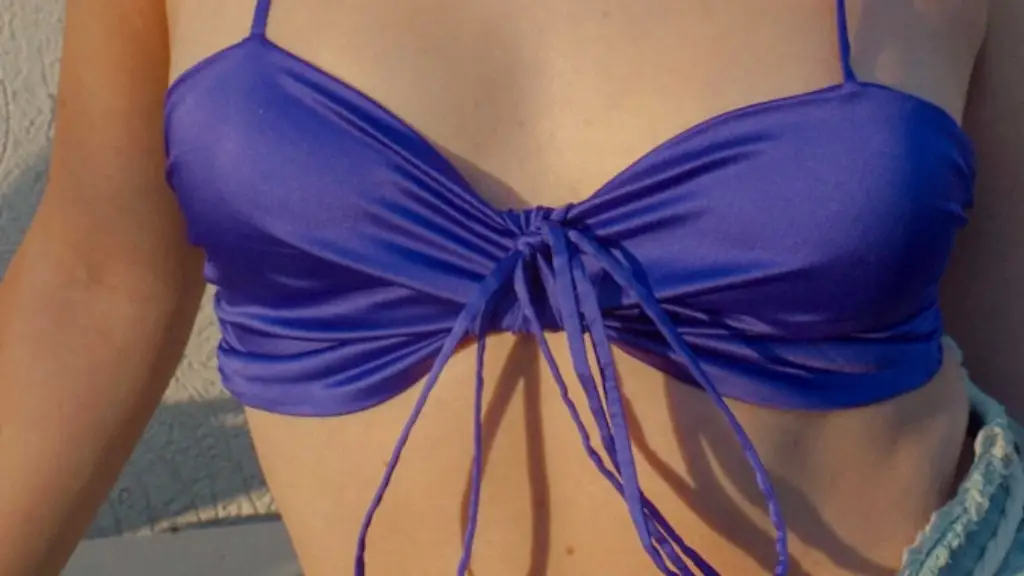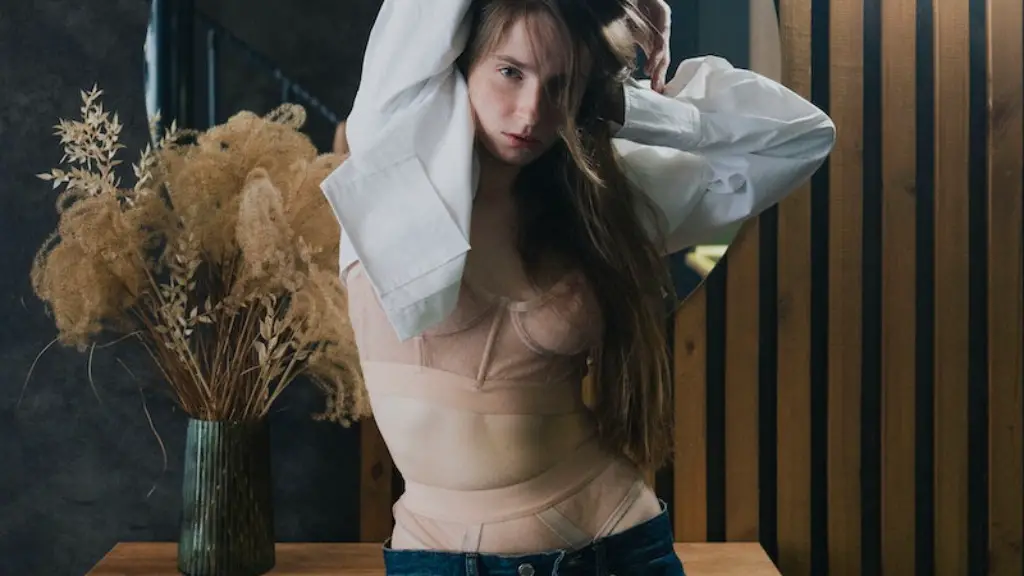Ironing leggings can be a bit tricky, but with a few tips you can get them looking great. First, always use a low heat setting on your iron, and be sure to use a press cloth or protective layer between the iron and the fabric. Second, leggings made of different materials will require different ironing techniques. For example, synthetic materials can often be ironed using steam, while natural fibers like cotton or wool will need a dry iron. Third, when ironing leggings make sure to smooth out any creases or wrinkles starting at the waistband and working your way down. By following these simple tips you’ll have perfectly pressed leggings in no time.
To iron leggings, start by setting your iron to a medium heat and laying your leggings out flat on your ironing board. Next, start at the waistband and work your way down, running the iron over each section of the leggings for 10-15 seconds. Be sure to turn the leggings over so that you can iron both the front and back. Finally, hang up your leggings or fold them and put them away.
How do you properly iron pants?
To iron pants, first fold them lengthwise to line up the legs. Then lay the pants on the board and flip one leg up to iron the inside of the bottom leg, working in sections all the way to the crotch. Then flip the pants over to iron the outside of that leg. Repeat this step on the other pant leg.
There’s no one definitive way to iron a pair of pants. However, most people place the pants on an ironing board, making sure that the lower legs seams are aligned with the edge of the board. Then, they start at the waistband and work their way down, using long, even strokes.
How do you iron pants without creasing
If you don’t have an ironing board, you can use the waist of your pants to hold the fabric taut while you iron. Just be sure to pull the fabric over the board so that you don’t accidentally iron your pants!
Ironing your clothing inside out and on a flat surface is the best way to get rid of wrinkles. If your fabric is delicate, iron it through a slightly damp cloth to avoid damage.
Are you supposed to iron jeans?
It is important not to iron your denim as the heat from the iron can burn the elastic. This can result in the loss of elasticity, making your jeans look saggy. It can also make the fabric thin and tear easily. Therefore, it is best to hang your jeans in the bathroom when you shower.
In general, all types of pants should be ironed except cargo pants and jeans (unless you’re into the western look) This is because of their informal nature. Wool trousers should be pressed between dry cleanings when needed, such as after unpacking for a business trip.
Can you iron spandex leggings?
Ironing spandex most garments containing spandex do not wrinkle when washed/dried properly. The general rule is to never iron garments that contain spandex. However, if ironing is absolutely necessary, iron on the lowest possible heat setting using smooth even pressure.
If you are looking to care for your spandex clothing, it is important to keep in mind that the fabric is very sensitive to heat. This means that you should avoid washing your spandex in hot water, using an iron, or machine drying, as this can permanently damage the fabric. Instead, opt for hand washing in cool water or spot cleaning when necessary. By taking these precautions, you can keep your spandex clothing looking like new for longer.
Can you iron polyester and spandex pants
Polyester can be ironed, but there are a few things to consider. Polyester is a synthetic fabric, so it’s essential not to use too much heat when ironing or it will create a polyester iron burn. It would help if you also used a press cloth to protect the fabric from direct contact with the iron.
To remove wrinkles from your clothing using a blow dryer, start by setting the blow dryer to hot and the highest setting. Then, hold the fabric taut from the bottom edge of your garment and direct the warm air to the crease. Keep the blow dryer moving so that it doesn’t overheat any one spot on the fabric.
Can creases be removed from pants?
Ironing your pants with spray starch can help to remove creases or wrinkles more easily. Simply spray a light amount of starch onto the fabric and then iron as usual. The starch will help to provide a smooth surface for the iron to glide over, making it easier to achieve a wrinkle-free finish.
You want to start by putting the jeans in a damp towel, like you would with a kitchen towel. This will help to loosen up the fabric and make it more pliable. From there, you can start to twist and shape the jeans into the desired shape. Once you’re happy with the results, let the jeans dry in the new shape.
What not to do when ironing
If you want to avoid making common ironing mistakes, here are a few things to keep in mind:
-Ironing fabrics that are too dry can cause them to scorch or develop wrinkles.
-Saving your delicates for last can mean that they don’t get ironed properly.
-Cranking up the heat can damage some fabrics.
-Not using tap water can leave mineral deposits on your iron.
-Not cleaning your iron can lead to buildup of lint and fabric particles.
-Storing the iron with water in it can rust the iron or damage the wiring.
-Not updating your ironing board can make ironing more difficult and can damage your clothes.
Ironing clothes can be a daunting task, especially if you don’t know the proper techniques. Different fabric types require different temperature settings, and there are many different areas of a garment that can be tricky to iron, such as pleats, tucks, seams, and collars. Just getting out the wrinkles can be a challenge for even the most experienced ironer. However, with a little practice and patience, you can master the art of ironing clothes and have them looking wrinkle-free in no time.
Can you use a flat iron on pants?
Hair straighteners can be used on clothes to avoid getting product on them. Different fabrics will require different heat settings. Silk is the most delicate and will require the lowest setting, while sweaters can handle a higher setting.
If you need to remove wrinkles from heavy and durable fabrics like linen, wool, and denim, an iron is going to be your best bet. It will give you a clean, crisp finish and be more efficient than steaming. Just be sure to use a lower heat setting on delicate fabrics like silk to avoid damaging them.
What setting do I put my iron on for jeans
Linen, cotton and denim are materials that are known to hold wrinkles well. This means that when you are ironing these fabrics, you will need to use the highest heat possible, from 150 to 200 degrees. If you find that you need to, you can also use steam or spray water from a bottle or your iron to help remove any wrinkles.
When you turn your jeans inside out before ironing, you’re protecting the colored side of the fabric from the heat of the iron. This helps to keep the fabric looking newer, longer. Ironing both the front and back pockets helps to remove any wrinkles or creases in those areas. And finally, taking the time to iron the waistband and other details like buttonholes and pleats gives your jeans a neater appearance.
Warp Up
Ironing leggings is a straight forward process. The first thing you need to do is make sure that your leggings are turned inside out. This will help to protect the leggings from getting any unwanted markings from the iron. Once the leggings are turned inside out, simply lay them flat on an ironing board and begin to iron. Start at the waistband and work your way down to the hem. Be sure to use a low heat setting on your iron, as leggings are typically made from delicate fabrics. Ironing leggings is a quick and easy process, and following these simple steps will ensure that your leggings look great.
Ironing leggings is a quick and easy process that anyone can do. You will need an iron and a piece of clean cloth. First, make sure that your leggings are dry. If they are damp, put them in the dryer on low heat for a few minutes. Next, lay your leggings flat on an ironing board and cover them with the clean cloth. Turn the iron on to a low heat setting and slowly run it over the cloth-covered leggings. Be sure to avoid the seams. Once you are finished, hang your leggings up or fold them and put them away.





